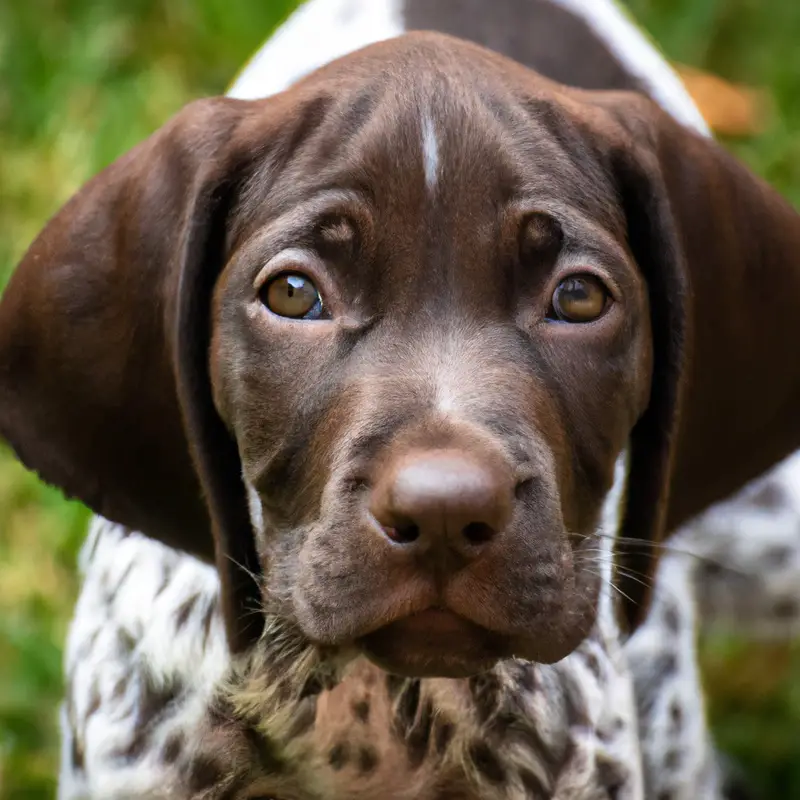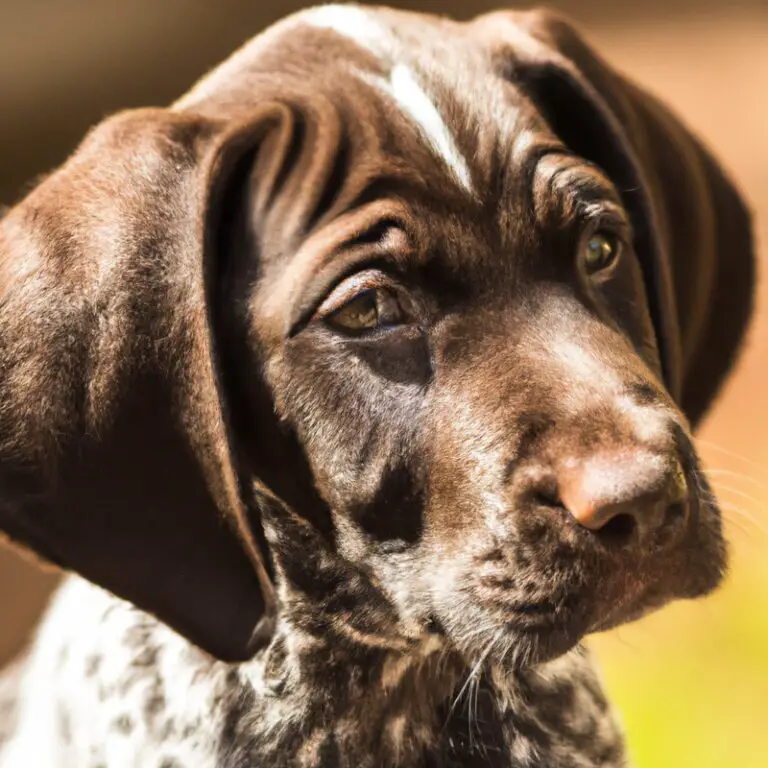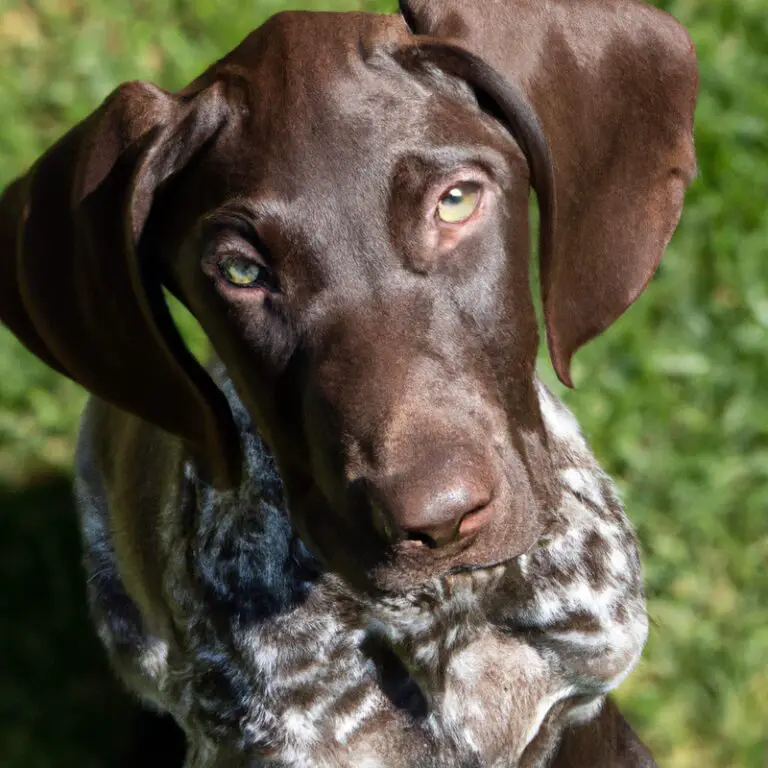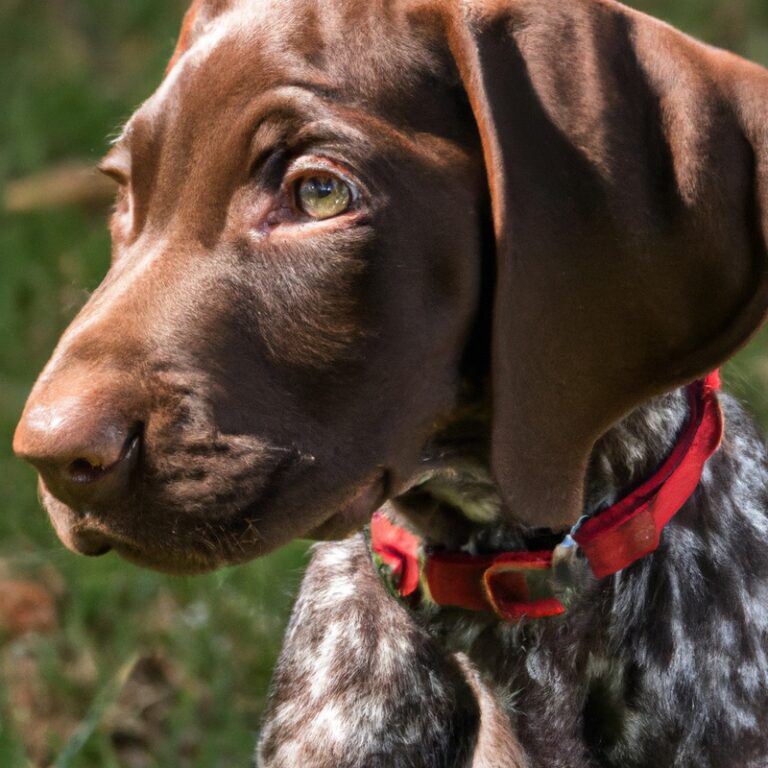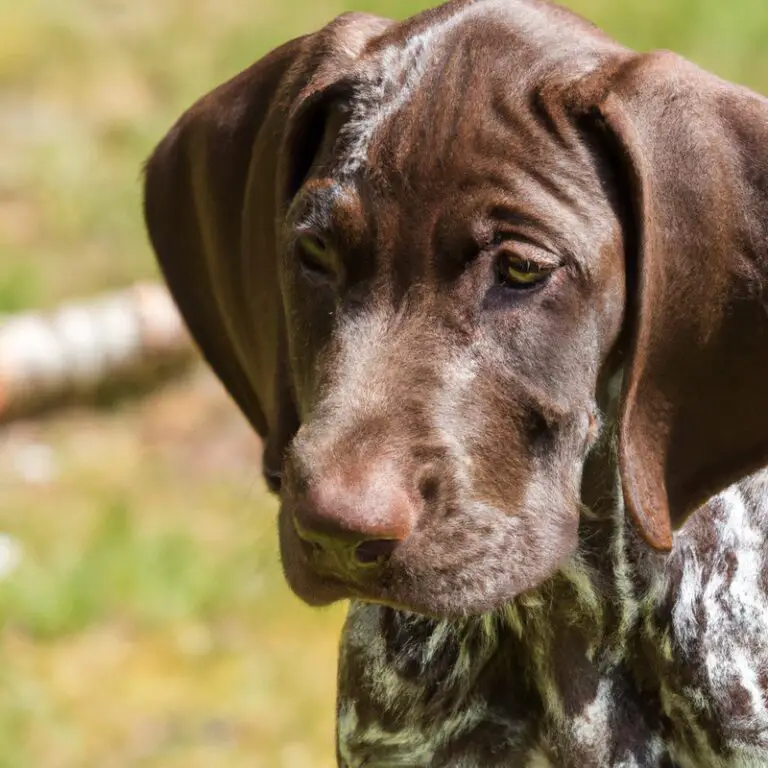Are German Shorthaired Pointers Good With Cats Or Other Small Pets?
Key Takeaways:
- German Shorthaired Pointers can generally get along well with cats and other small pets if properly socialized.
- Early training and gradual introductions are important for fostering a positive relationship between German Shorthaired Pointers and small pets.
- Supervision and caution should be exercised when introducing German Shorthaired Pointers to cats or other small pets until their compatibility is established.
- It is important to remember that individual personalities and behaviors can vary, so compatibility between German Shorthaired Pointers and small pets should be assessed on a case-by-case basis.
Are German Shorthaired Pointers good with cats or other small pets? It’s a question that many potential dog owners ponder before bringing this energetic breed into their homes.
As an expert in canine behavior, I’ve witnessed both successful and challenging interactions between German Shorthaired Pointers and these smaller companions.
In this article, I’ll explore the behavior of German Shorthaired Pointers towards cats and other small pets, provide tips for introducing them, discuss factors that influence compatibility, and offer strategies for managing their behavior. So, if you’re considering adding a German Shorthaired Pointer to your household with existing feline or small pet residents, let’s dive in and discover the possibilities!
| German Shorthaired Pointers | Cats/Small Pets | |
|---|---|---|
| Temperament | Active, energetic, and friendly | Varies, some may be territorial or aggressive |
| Training | Quick learners and highly trainable | Varies, may require more patience and time |
| Socialization | Usually sociable with people and other dogs | Varies, may need extra time and effort |
| Prey Drive | High prey drive, instinct to hunt | Potential risk for cats/small pets |
| Supervision | Need supervision around cats/small pets | Constant supervision recommended |
Behavior of German Shorthaired Pointers towards Cats
Can German Shorthaired Pointers Coexist Peacefully with Cats?
Can German Shorthaired Pointers Coexist Peacefully with Cats? German Shorthaired Pointers have a strong prey drive, which means they may be inclined to chase small animals like cats.
However, with proper training and socialization, they can learn to coexist peacefully.
The key is to introduce them to cats at a young age and supervise their interactions. It’s also important to teach them commands like “leave it” and “stay” to redirect their attention.
Given the right circumstances and a slow introduction process, German Shorthaired Pointers can live harmoniously with cats.

Tips to Introduce German Shorthaired Pointers to Cats
When introducing a German Shorthaired Pointer (GSP) to a cat, there are a few tips that can help make the process smoother. First, it’s important to create a safe and calm environment for both pets.
Ensure that the cat has a space to retreat to, like a high shelf or separate room.
Allow them to get acquainted with each other’s scents through doors or baby gates before meeting face to face. Supervised interactions and positive reinforcement are key – reward both pets for calm behavior.
Gradually increase their time together, always prioritizing their safety and comfort.
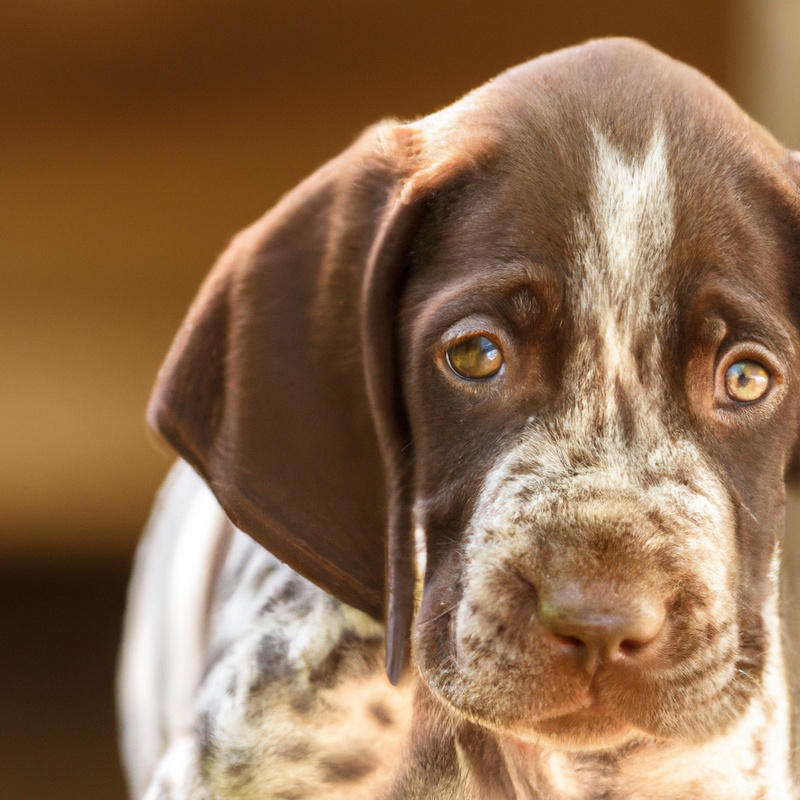
Behavior of German Shorthaired Pointers towards Small Pets
German Shorthaired Pointers and Small Pets: What to Consider
When considering German Shorthaired Pointers and small pets, there are a few things you should keep in mind. First and foremost, it’s important to remember that German Shorthaired Pointers are hunting dogs by nature.
This means that they have a strong prey drive and may see small pets such as cats, rabbits, or birds as potential prey.
While some German Shorthaired Pointers can coexist peacefully with small pets, it largely depends on their individual temperament, socialization, and training. If you have small pets and are considering bringing a German Shorthaired Pointer into your home, it’s crucial to take the following factors into consideration:
- Introduce them slowly and carefully: Gradually introduce the German Shorthaired Pointer to your small pets and closely monitor their interactions. Provide a safe and controlled environment for them to get to know each other.
- Early socialization: Properly socialize your German Shorthaired Pointer from a young age to help them understand acceptable behavior around small pets.
- Ongoing training: Consistent training and positive reinforcement can help teach your German Shorthaired Pointer to coexist peacefully with small pets.
- Supervision: Always supervise interactions between your German Shorthaired Pointer and small pets, especially during the initial stages.
- Separate spaces: Consider providing separate spaces for your small pets and German Shorthaired Pointer to ensure their safety and peace of mind.
Precautions and Training for German Shorthaired Pointers with Small Pets
Precautions and Training for German Shorthaired Pointers with Small Pets First and foremost, it’s important to supervise all interactions between your German Shorthaired Pointer and small pets. This ensures the safety of both animals and prevents any unwanted incidents.
Here are some precautions you can take:
- Introduce them gradually: Allow your Pointer and small pet to get to know each other slowly. Start with short, supervised meetings and gradually increase the duration over time.
- Create separate living spaces: Give your small pet their own secure area where they can retreat to if needed. This provides a safe space for them and reduces the chance of any confrontations.
- Training and socialization: Train your Pointer to have good obedience skills and teach them appropriate behaviors around small pets. Positive reinforcement training can help them understand what is expected of them.
- Teach boundaries: Set clear boundaries for your Pointer regarding interactions with small pets. Make sure they understand what is acceptable behavior and what is not.
- Use positive reinforcement: Reward your Pointer for calm and gentle behavior around small pets. This helps reinforce positive associations and encourages them to be well-behaved.
Remember that every dog is different, and some German Shorthaired Pointers may have a stronger prey drive than others. If you have any concerns or need additional guidance, it’s best to consult with a professional trainer or behaviorist who can tailor advice to your specific situation.
Factors That Influence German Shorthaired Pointers’ Compatibility with Cats and Small Pets
Age and Socialization of German Shorthaired Pointers
Age and socialization play significant roles in determining how German Shorthaired Pointers will interact with cats and other small pets. First and foremost, starting socialization early is crucial.
When German Shorthaired Pointers are exposed to different animals, including cats and small pets, from a young age, they are more likely to develop positive associations and learn appropriate behavior.
Additionally, the age of the German Shorthaired Pointer is important. Puppies are generally more adaptable and open to new experiences, making it easier to introduce them to cats and small pets.
However, it’s important to note that adult German Shorthaired Pointers can still be successfully socialized with cats and small pets, but it may require more time and patience.
Individual Temperament – Evaluating a German Shorthaired Pointer’s Behavior
When it comes to evaluating a German Shorthaired Pointer’s behavior, one crucial aspect to consider is their individual temperament. Each dog has their own unique personality traits and tendencies.
By observing their interactions with people and other animals, you can gain insights into their temperament.
First and foremost, pay attention to how the German Shorthaired Pointer reacts to new environments or situations. Are they confident, curious, and adaptable?
Or do they seem anxious, fearful, or aggressive?
This can give you an idea of how they may behave in various situations. Next, observe their social behavior.
Do they enjoy being around people, seeking attention and affection?
Are they friendly towards strangers or more reserved? Additionally, take note of their behavior around other dogs and animals.
Do they play well, show signs of dominance, or exhibit aggression?
Another important factor to consider is their energy levels. German Shorthaired Pointers are known to be active and energetic dogs.
Are they constantly on the go, needing lots of exercise and mental stimulation?
Or are they more relaxed and easygoing, content with moderate activity levels? Lastly, assess their trainability and willingness to learn.
Are they quick to pick up new commands and eager to please?
Or are they more independent and stubborn, requiring patient and consistent training methods? By evaluating an individual German Shorthaired Pointer’s temperament, you can determine their compatibility with your lifestyle, family, and other pets.
Assessing Prey Drive: A Key Factor in Compatibility
Assessing prey drive is a crucial factor to consider when determining the compatibility of German Shorthaired Pointers with cats or other small pets. Prey drive refers to a dog’s instinct to chase, capture, and potentially harm small animals.
Understanding your GSP’s prey drive can help you anticipate their behavior and make informed decisions about introducing them to other pets.
Some GSPs have a higher prey drive due to their hunting background, while others may have a lower prey drive. It’s important to assess your GSP’s prey drive through supervised interactions and professional guidance to ensure the safety and well-being of all animals involved.
Managing German Shorthaired Pointers’ Behavior around Cats and Small Pets
Supervision and Separation: Safeguarding Cats and Small Pets
Supervision and separation are key for safeguarding cats and small pets when living with a German Shorthaired Pointer. First and foremost, always supervise interactions between your dog and your other furry friends.
Observe their behavior closely to ensure there is no aggression or chasing.
When you cannot directly supervise, it’s important to separate them. This can be done by using baby gates, crates, or designated areas in your home.
This will prevent any potential mishaps and keep everyone safe.
Remember to introduce them gradually and provide positive reinforcement for good behavior. By maintaining supervision and implementing separation when necessary, you can create a harmonious living environment for all your furry family members.
Positive Reinforcement Training for German Shorthaired Pointers
Positive reinforcement training is a highly effective approach for training German Shorthaired Pointers (GSPs). It involves rewarding desired behaviors with treats, praise, or play, which encourages them to repeat those behaviors in the future.
First and foremost, positive reinforcement training focuses on rewarding good behavior rather than punishing undesirable behavior.
This approach helps build a strong bond between you and your GSP, as they associate good behavior with positive experiences. During training sessions, make sure to have plenty of tasty treats on hand.
When your GSP performs the desired behavior, such as sitting or staying, immediately reward them with a treat and praise.
Be consistent in your training and use the reward system consistently to reinforce the behavior you want to see. Remember to keep training sessions short and enjoyable.
GSPs are intelligent and energetic, so they thrive on mental stimulation and physical exercise.
Incorporating training into play sessions can be a fun way to reinforce good behavior while keeping your GSP engaged and happy. By implementing positive reinforcement training techniques, you can help your German Shorthaired Pointer become a well-behaved and obedient companion.
With consistency and patience, you’ll see your GSP respond positively and eagerly to training, making your bond stronger and your lives together more enjoyable.
Providing Adequate Exercise and Mental Stimulation
Providing adequate exercise and mental stimulation is essential for German Shorthaired Pointers. These energetic and intelligent dogs thrive on physical activity and mental challenges.
To keep them happy and well-behaved, it’s important to ensure they get enough exercise every day.
This can include brisk walks, jogging, or playing fetch in a securely fenced area. Mental stimulation is equally important.
Engage their minds with puzzle toys, obedience training, or interactive games that require problem-solving skills.
Final Verdict
German Shorthaired Pointers can coexist peacefully with cats and small pets, but it requires careful management and proper introductions. The compatibility largely depends on factors such as age, socialization, individual temperament, and prey drive.
By supervising interactions, providing positive reinforcement training, and ensuring adequate exercise and mental stimulation, owners can help foster a harmonious environment.
It is important to remember that each dog is unique, and understanding their behavior and making informed decisions is key. With proper precautions and responsible ownership, German Shorthaired Pointers can indeed live harmoniously with cats and small pets.
Trust the expertise and recommendations presented here to ensure the successful integration of these furry companions.

